
Osaka Castle is one of Japan's most famous and historic castles. Located in the center of Osaka City, Osaka Castle was said to have been built by Toyotomi Hideyoshi, who completed the unification of Japan.
"When you come to Osaka, visit here first!" - This seems to be the thought of many tourists from abroad.
With the help of our guide, we learned many interesting things about Osaka Castle!
Brief history of Osaka Castle: Said to have been built by Hideyoshi, but actually...
For this article, we joined a tour of Osaka Castle. Today's guide is Mr. Ichiman Masayuki of the Osaka Sightseeing Volunteer Guide Association.
The association has prepared several walking tours around the Osaka Castle Park area. The time required is 1 to 2 hours.
From the available courses, I chose the "Oteguchi Course," through which we will visit Otemon, Tanzanoucho, Toyokuni Shrine, and more.
So exactly what kind of castle is Osaka Castle in the first place?
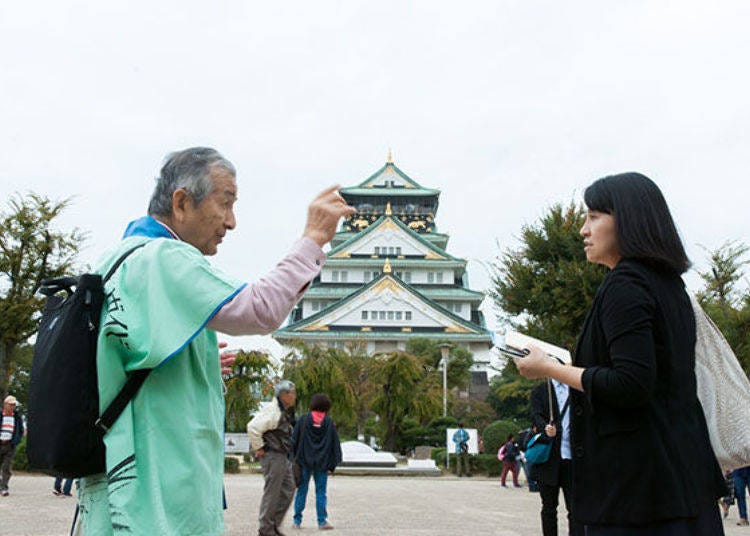
"Osaka Castle was built by Toyotomi Hideyoshi in an area where a temple called Ishiyama Honji once stood," says Mr. Ichiman. Originally, it was written as "Osaka Castle."
A castle tower was built in 1585, and over 15 years, the area around Osaka Castle was completed, boasting a vast measure of space, including the outer regions and citadels. It was a magnificent castle that clearly showed the power of Hideyoshi.
However! The current castle is not the one that Hideyoshi made. Actually, it seems to have been built by the Tokugawa Shogunate. The original Osaka Castle was destroyed during the Siege of Osaka in 1615 when the Tokugawa and Toyotomi families clashed.
The Tokugawa Shogunate completely infiltrated the castle of the Toyotomi, and built a new one on top of it in the style of the west.
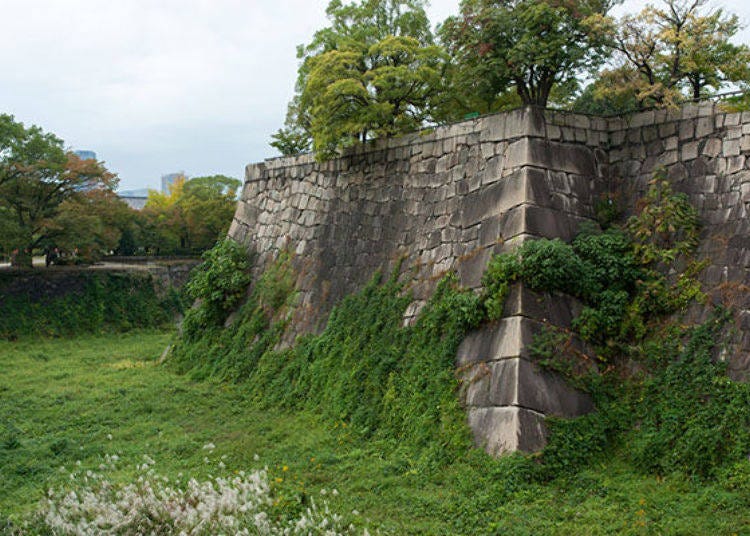
The castle tower was built in the era of Tokugawa Iemitsu in 1626 by the Tokugawa Shogunate, but in no less than 40 years, it was burned down by a lightning strike.
Although it had been left untouched since then, it was rebuilt in 1931 according to the Important Cultural Heritage painting of the castle from the Toyotomi Era titled "Osaka Natsu-no-Jinzu Byobu," with a donation of about 1.5 million yen (in the currency of that time) gathered from citizens. That is what became the Osaka Castle as it now stands.
The Mighty Stone Walls of Otemon
"The highlights of Osaka Castle are the stone walls and the moat," says Mr. Ichiman.
The castle tower was built in the Showa Era, but the stone walls and moats were left as-is from the Tokugawa Period. The walls, made from fine stones that were brought in from various parts of Japan, boasts a surprising scale.
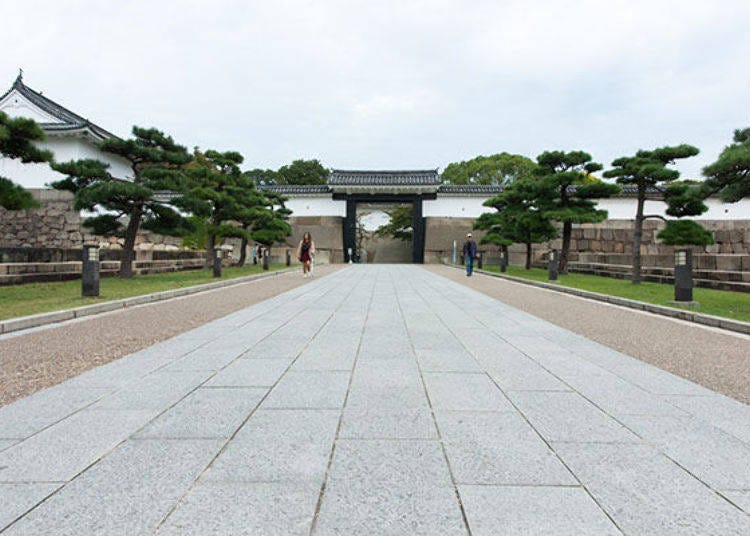
The first thing you will notice at the entrance of the castle "Otemon" is the stone wall near the main gate. Looking at Otemon from the Osakajo Otemae Shibafu Hiroba (the Osaka Lawn Square), you can see how the stones are laid out on the left and right walls of the outer moat are quite different. It seems that the left side towards the gate is stacked randomly while the right side is more orderly.
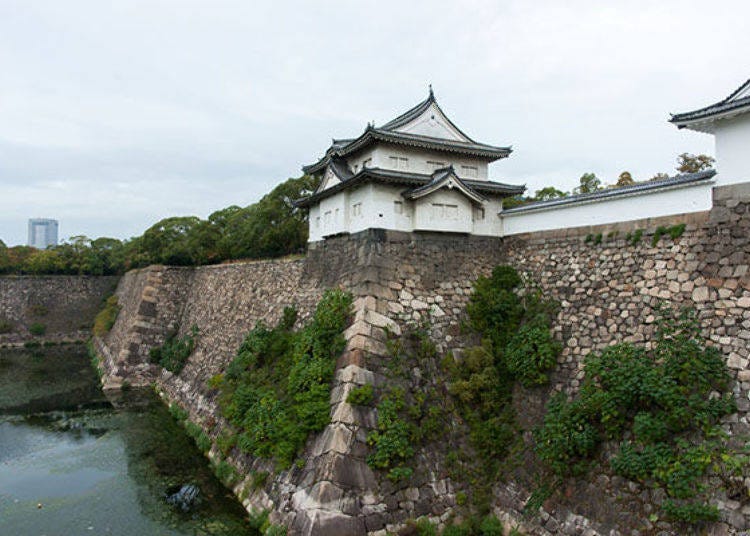
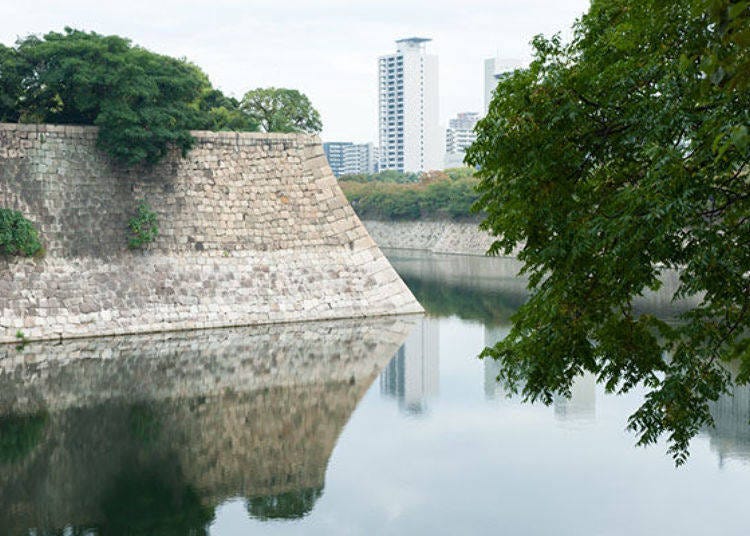
Why is there such a difference? "Both of them are stone walls of the Tokugawa Period, but the left side is from the building as it was originally constructed, and the right side was constructed about 7 to 8 years after that," explains Mr. Ichiman.
The construction of Osaka Castle took ten years, and in that time, the construction technology of the stone walls greatly developed, hence the difference in the way of stacking stones. "Oh, I see!" I think to myself. He really knows a lot about the construction of stone walls.
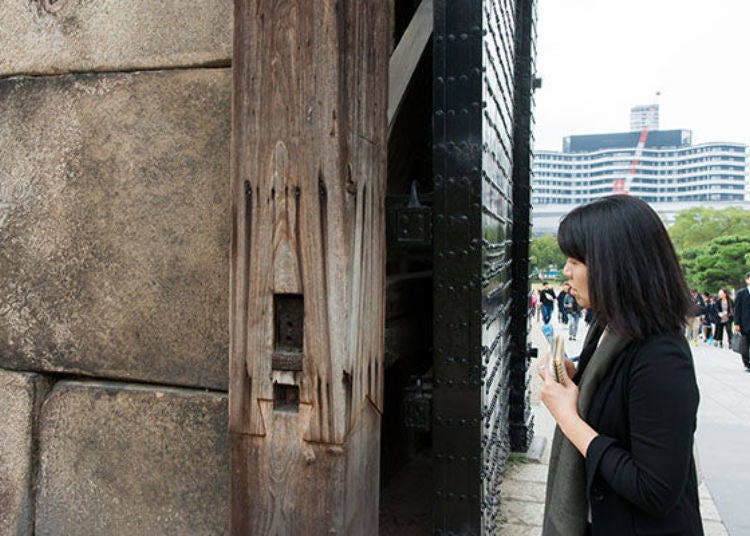
Next up is Otemon! I learned a critical point here. There is a complexly shaped "joint" on the right-side pillar. It is said to be the traces of the reparation of an old pillar from the Taisho Era, but even here in Japan, this is the only place that it is done in this way.
Nobody understood this structure, and it had been considered a mystery for many years; however, in 1979, it was revealed in a newspaper that only a single carpenter in Kobe City had figured out its structure.
It is almost as if it was purposely left behind from the past for us to solve like a puzzle. The restoration technology of the Taisho Era was so complicated.
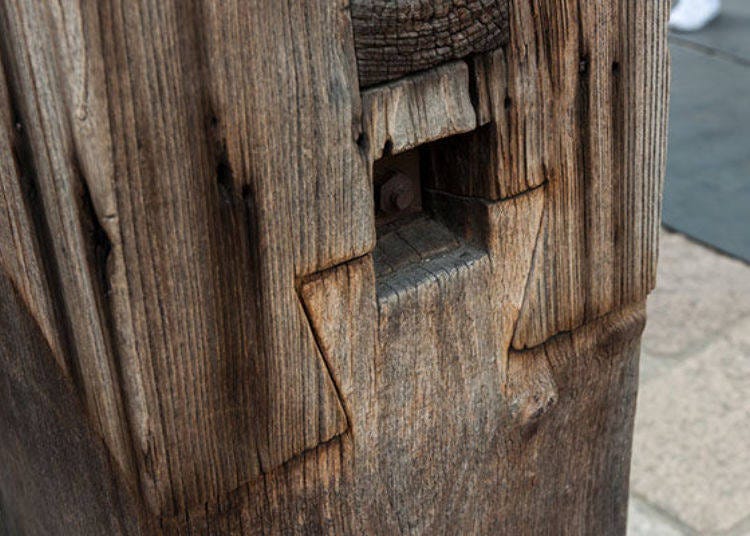
There's one more thing I learned about Otemon. In the front of the main gate are two giant megaliths for which Osaka Castle is famous. They are called "Ote-mitsuke Ishi" and "Ote-niban Ishi," and are, respectively, the fourth and fifth largest stones in the castle.
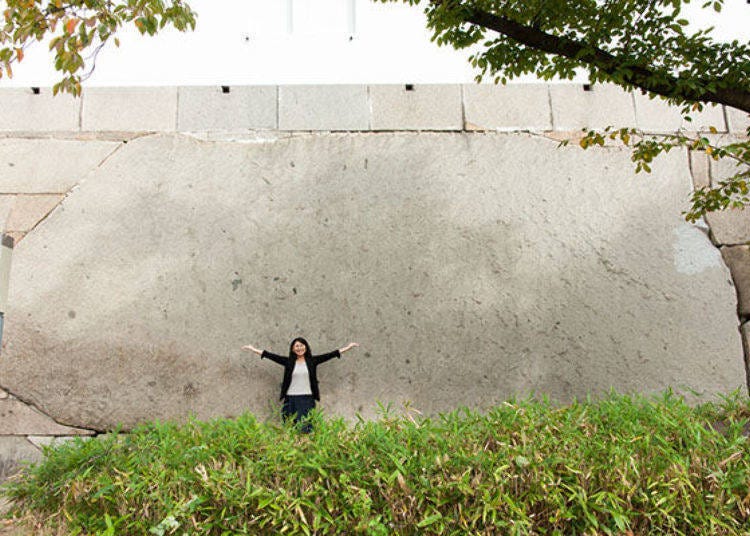
Popularly known for bringing success in life: the Houkoku Shrine!
If you go through the main gate, you will notice a "dry moat," which has not contained water since the beginning of the castle.
Osaka Castle is located on the northern edge of the Uemachi Daichi highlands, so it seems that it was difficult to get water to flow here.
Although there is no water, this is still a great photo spot when the cherry blossom trees are in bloom. In the spring, they are pale pink in color, and in fall, you can see the exquisite contrast between the autumn foliage and the moats!
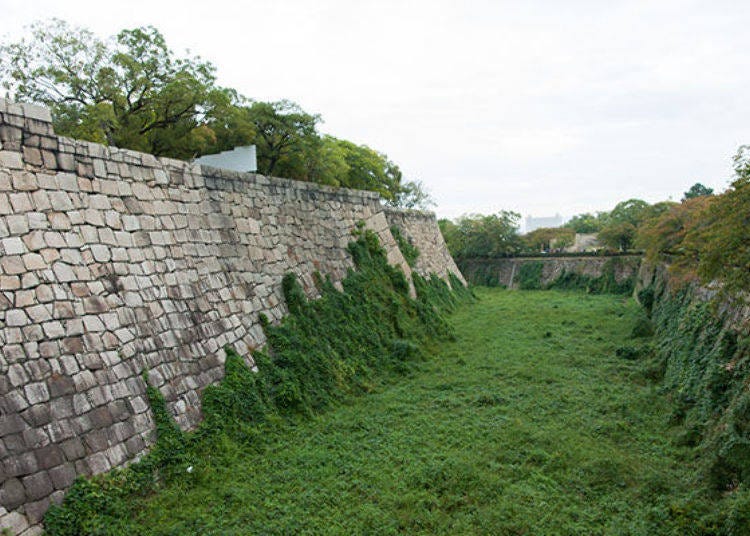
Right across the moat is the Castle Tower, but I found a wonderful shrine just before that. It is the Houkoku Jinja of Toyotomi Hideyoshi. This is a shrine that has grown rapidly in popularity among young people.
It seems that many of them come here to pray for success in work and marriage. When you come to the castle, why not take some time to stop by this shrine as well?
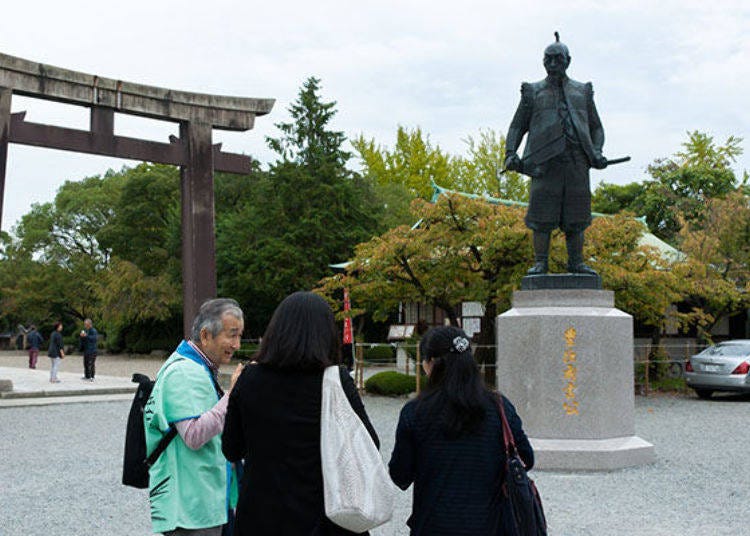
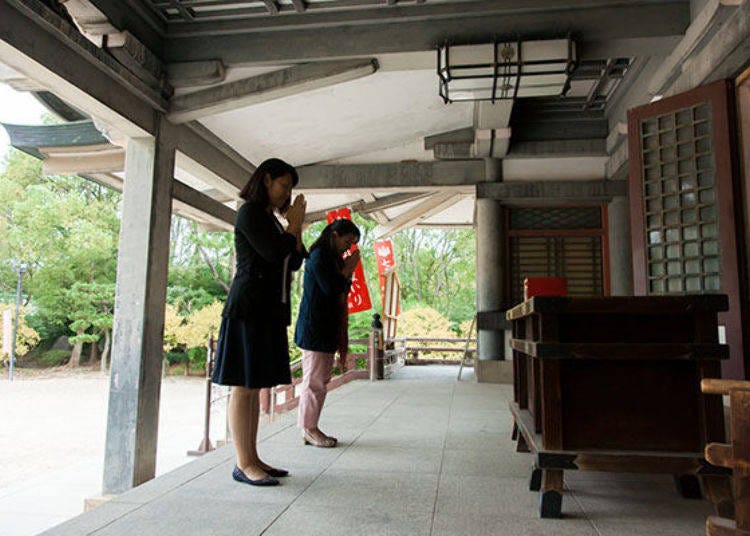
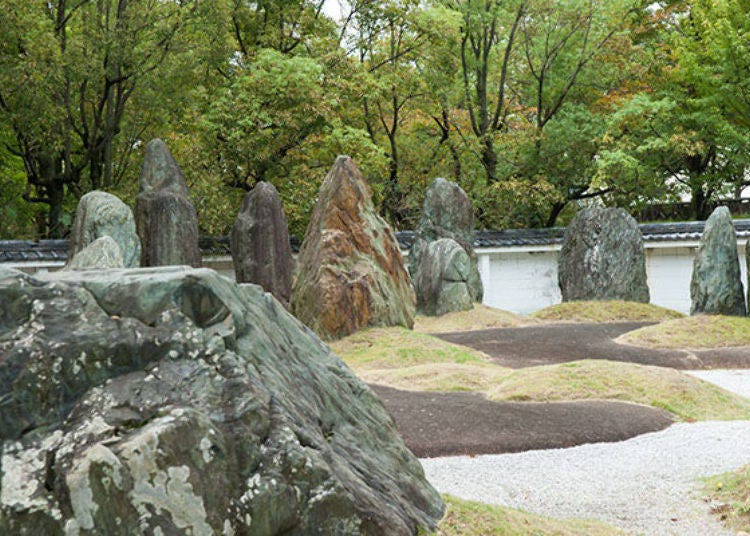
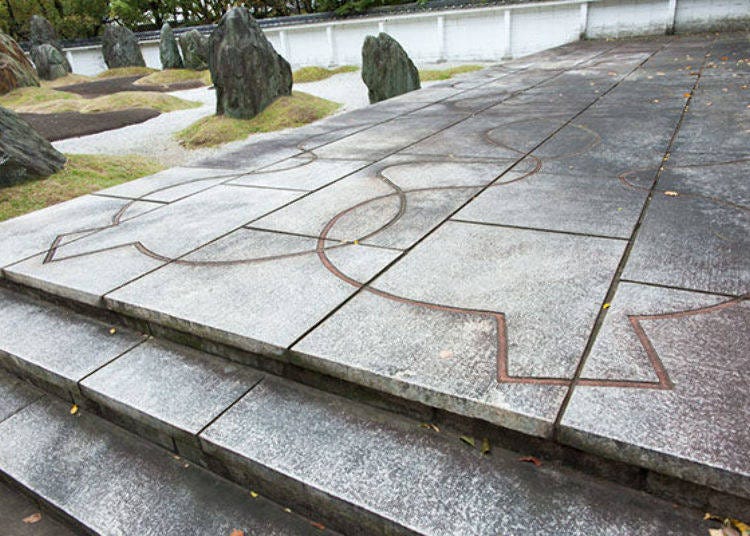
On to the Osaka Castle Tower to See the Shachihoko and the Tiger!
When you pass the Sakura Gate, which is the entrance to the inner citadel, you will see the largest stone in the castle, "Takoshi." The surface area seems to have 36 tatami mats. It is wider than a one-bedroom apartment!
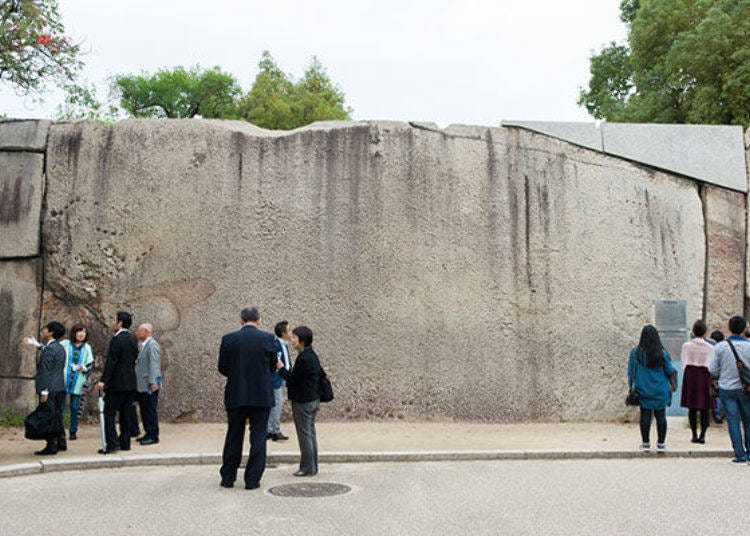
Heading back to Sakura Gate, at last, we reach Osaka Castle Tower. It is so impressive. I had to let out a voice of surprise... "Wow!" On the rooftop floor is a golden Shachihoko sculpture (a creature in Japanese folklore with the head of a tiger and the body of a fish), and on the black wall is a tiger drawn in gold. So this is the castle of Hideyoshi, who unified the land! It has quite a majestic style.
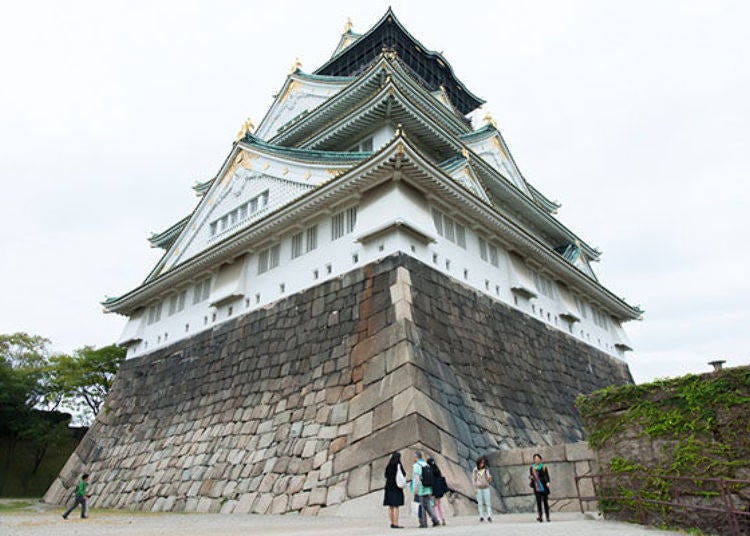
"On top of having the stone walls from the Tokugawa Period, the castle of the Toyotomi Period was reproduced with the highest level construction technology. This is the true figure of the Osaka Castle of today," explains Mr. Ichiman.
The Osaka Castle tower may appear old, but the inside is made of concrete. Thanks to this, it didn't burn again, not even during the Pacific War. There is a certain romance to the castle tower of the Showa Period and the stone walls of the Edo Period coexisting beyond the times.
And with that, the guided tour comes to an end. Osaka Castle is full of many places of interest. You can also enjoy the guided tour with commentary to learn even more! You can apply for a guided tour online up to 10 days in advance.
-
NPO Honjin Osaka Kanko Volunteer Guide CouncilNPO法人 大阪観光ボランティアガイド協会
- Address 3-11 Osakajo, Chuo-ku, Osaka-shi, Osaka-fu (inside Osaka Castle Park Center)
Closed: Dec 28~Jan 3
Guide Fee: Free
*May incur fees if applying via travel agency
090-3059-6923, 090-3493-9269 (10:00AM~3:30PM)
Overlooking All of Osaka: Up To the Osaka Castle Tower Observatory!
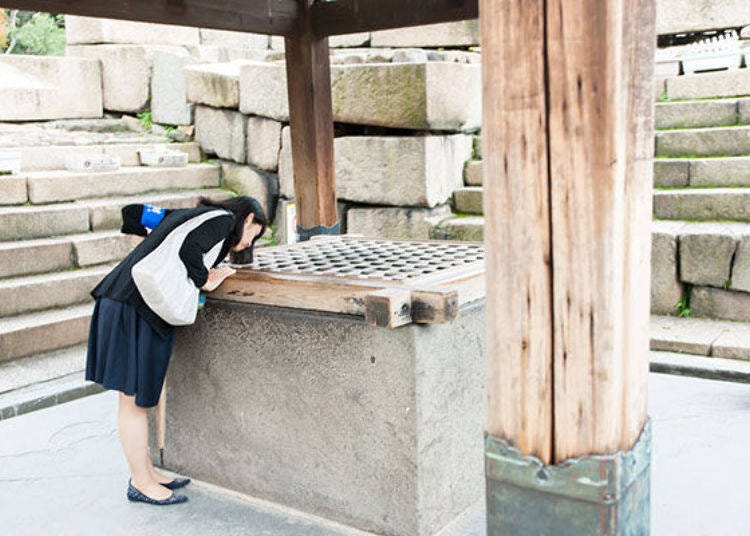
Inside Osaka Castle is a museum introducing the castle's history (¥600, tax included). First, go to the 8th-floor observatory via the elevator or the stairs! From here you can see the city of Osaka. It is fun to view the exhibits of each floor in order starting from the top.
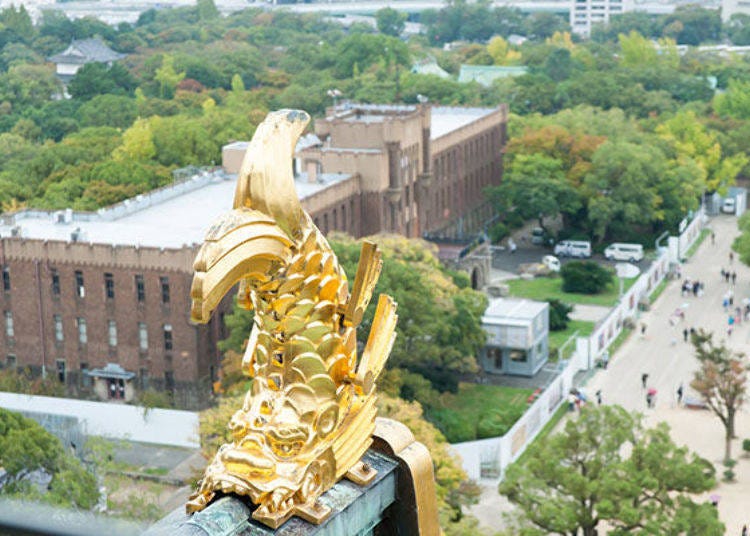
When the weather is nice, you can see Mount Ikoma and Mount Shigi in Nara Prefecture, and Mount Rokko in Hyogo Prefecture from the Castle Tower. From the south side, you can see Abeno Harukas, the tallest skyscraper in Japan. In front of that is where samurai warrior Sanada Yukimura fought during the Siege of Osaka.
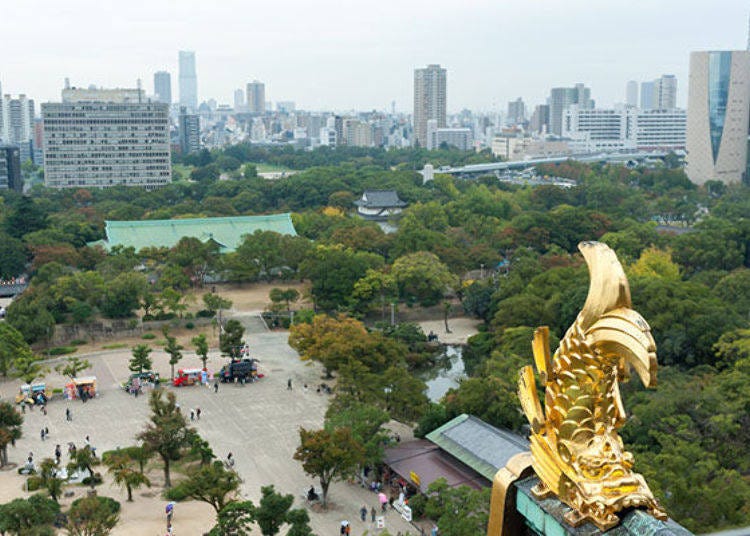
Also worth noting is the "haisuichi," or water distribution pond, spreading out towards the east side of the castle tower. The main tower of the Toyotomi Era was around here. There were also stone walls from Osaka Castle found in the vicinity of this distribution pond from the Toyotomi Period, whose maintenance is now being prepared for public release.
There are so many historical romances still buried around here, which is pretty exciting!
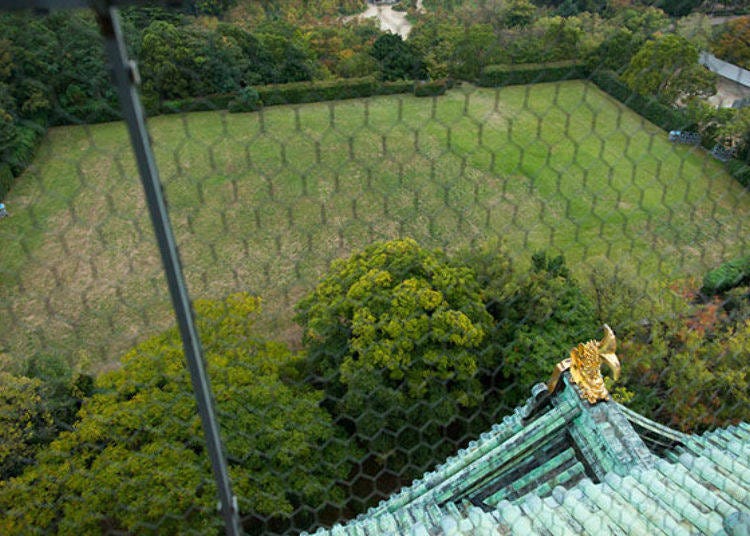
The Life of Hideyoshi and a Museum of Stories of Toyotomi Osaka Castle
On the 7th floor you can enjoy the "Karakuri Taikoki" exhibit, which shows the life of Toyotomi Hideyoshi using dioramas.
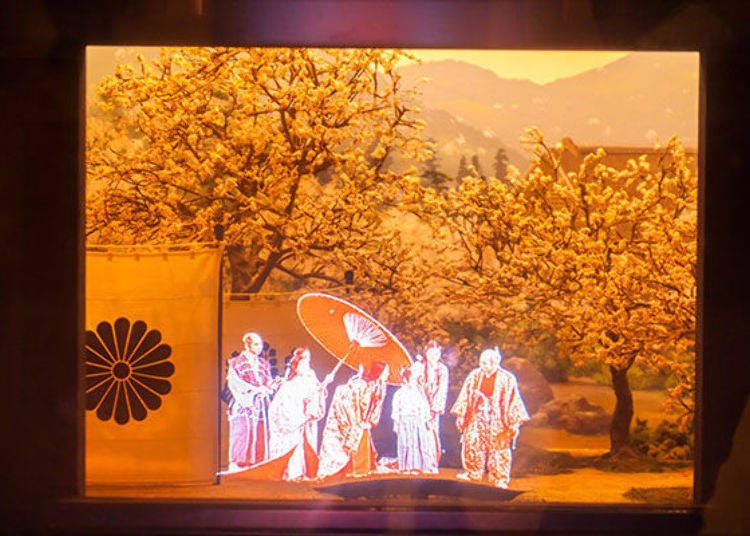
On the 5th floor, there is a figurine exhibition called "Miniature Natsu no Jin (Siege of Osaka)" which is based on the famous "Osaka Natsu no Jinzu Byobu" painting. It depicts the famous Battle of Tennoji. Can you find Sanada Yukimura, the samurai warrior who fought in this battle?
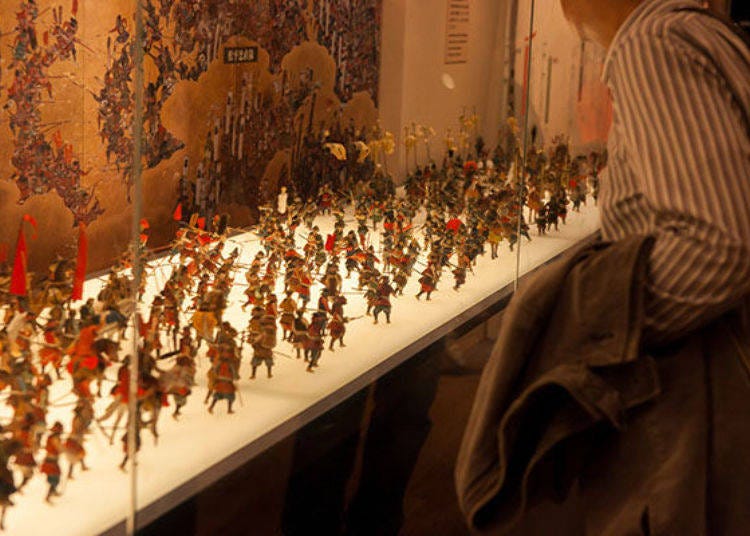
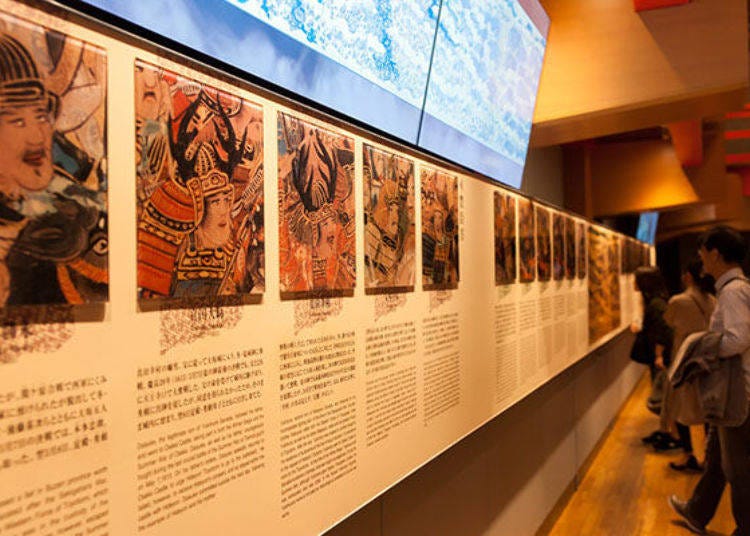
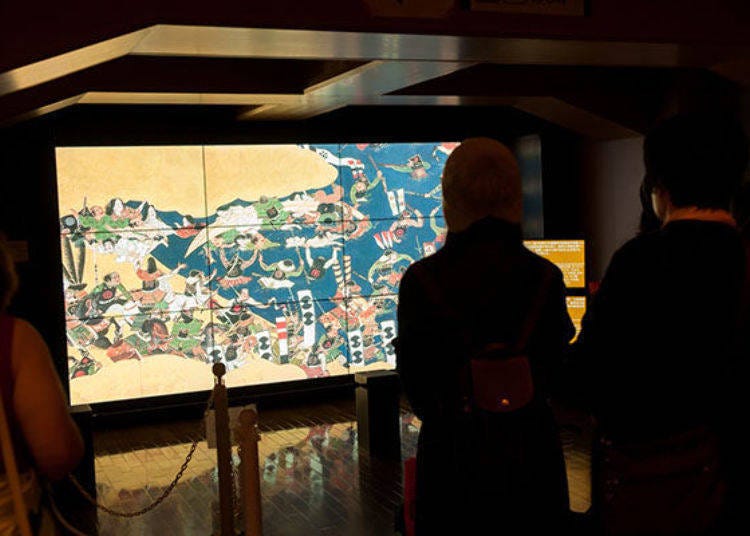
We pass through the 4th and 3rd floor, where the displays change periodically, to the 2nd floor. Here you can wear a replica Sengoku battle helmet in the "Kabuto/Jinbaori Shichaku Taiken Corner" (¥500 per try-on, tax included).
The most popular is Hideyoshi's helmet, but due to the influence of the NHK Period Drama "Sanada Maru," Yukimura's helmet stole first place in 2016. Both helmets are pretty cool!
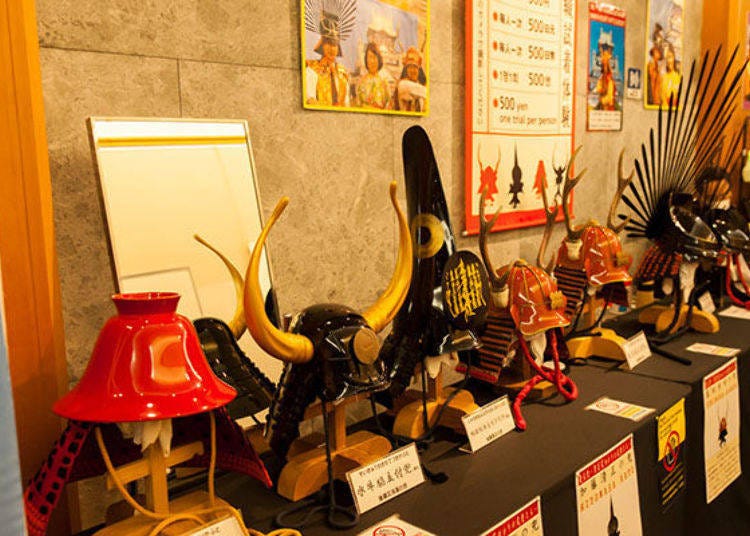
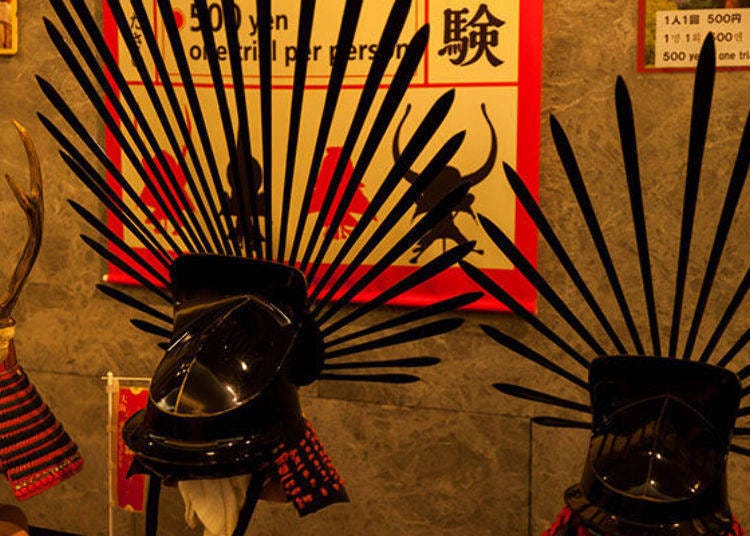
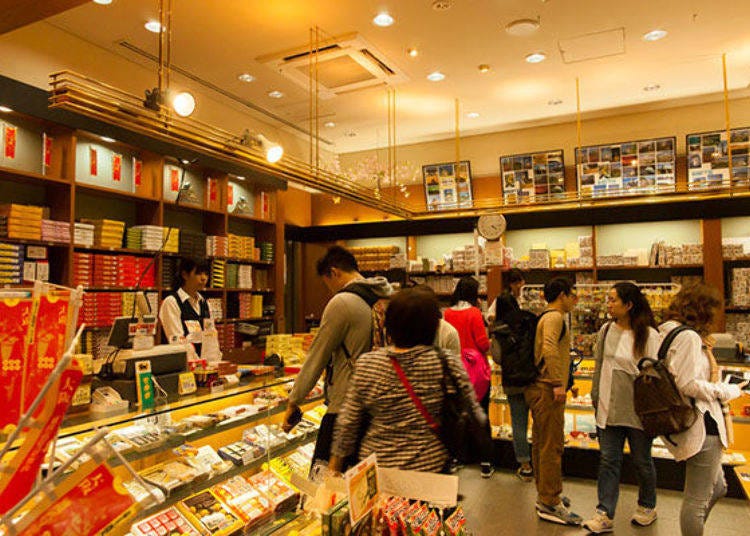
-
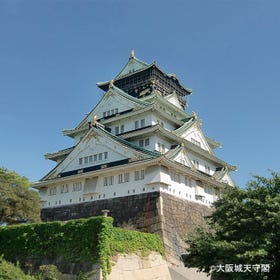
-
Address
1-1, Osakajo, Chuo-ku, Osaka-shi, Osaka, 540-0002
View Map -
Nearest Station
Osakajokoen Station (JR Osaka Loop Line)
- Phone Number 06-6941-3044
-
Address
1-1, Osakajo, Chuo-ku, Osaka-shi, Osaka, 540-0002
The Secret Spot Behind Osaka Castle
When you exit the castle tower, please be sure to check out the back of the castle. In the quiet shade where few people are found, a stone monument standing peacefully.
This place is said to be a side room of Hideyoshi where his second wife Yodo and their child Hideyori committed suicide. It is also believed that Sanada Yukimura's son Daisuke passed away here.

Further down the stairs you will see the Gokuraku Bridge on the north side of the castle tower. Looking up at the main tower from here is also a beautiful view. The peacefulness of the moats and the power of the stone walls here at Osaka Castle will be forever burned into my memory.
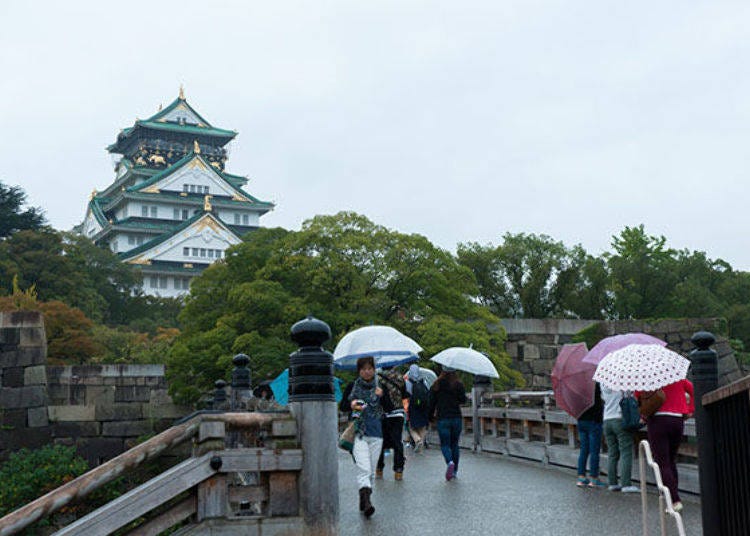
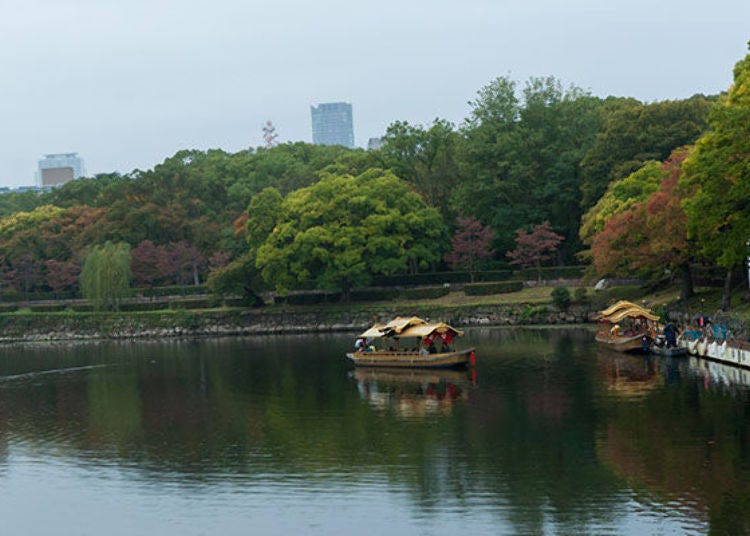
While walking through Osaka City, you will often notice Osaka Castle peeking out from between the buildings. But visiting it in person gives you a surprising close-up view of the vast castle grounds and the powerful castle tower. If you have the chance, please be sure to explore the towering stone walls and moats of Osaka Castle.
-
Osakajo Koen (Osakajo Park Center)大阪城公園(大阪城パークセンター)
- Address 3-11 Osakajo, Osaka-ku, Osaka-shi
- Phone Number 06-6755-4146
Hours: 9:00AM~5:30PM
Closed: Dec 29~Jan 3
Osaka Castle Access and Tickets
Osaka Castle is located in the center of the city of Osaka.
Nearest station: JR Osakajo-koen Station and the JR Morinomiya Station. If using the subway, the closest stops would be Temmabashi Station or Tanimachi 4-chome Station.
Tickets
Entry to the Osaka Castle grounds is free. Admission for the Osaka Castle Museum is 600 yen for adults, and free for children 15 and younger.
Text by:kurashisa
Book an unforgettable experience at Osaka Castle!
Get tickets and more! Make your trip extra memorable by booking one of these recommended tours.
- Area
- Category
*Prices and options mentioned are subject to change.
*Unless stated otherwise, all prices include tax.
Limited time offer: 10% discount coupons available now!
Recommended places for you
-
Menu
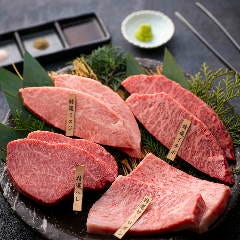
ISHIDAYA Hanare
Yakiniku
Kobe, Sannomiya, Kitano
-
Goods

Yoshida Gennojo-Roho Kyoto Buddhist Altars
Gift Shops
Nijo Castle, Kyoto Imperial Palace
-
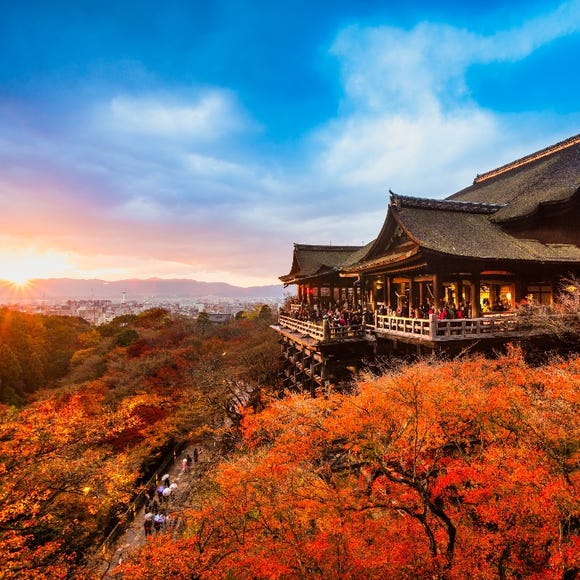
Kiyomizu-dera Temple
Temples
Gion, Kawaramachi, Kiyomizu-dera Temple
-
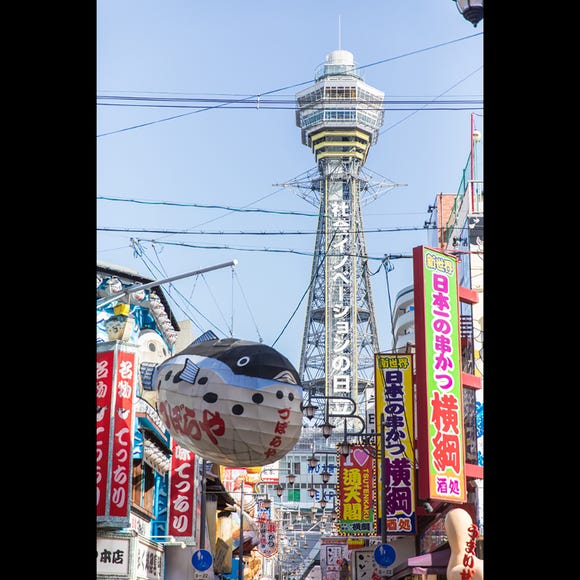
Tsutenkaku Tower
Landmarks
Shinsekai, Tennouji, Tsuruhashi
-

Jukuseiniku-to Namamottsuarera Nikubaru Italian Nikutaria Sannomiya
Izakaya
Kobe, Sannomiya, Kitano
-
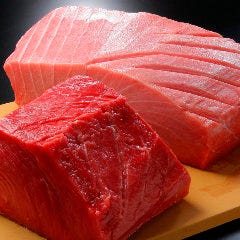
Kamesushi Sohonten
Sushi
Umeda, Osaka Station, Kitashinchi
-
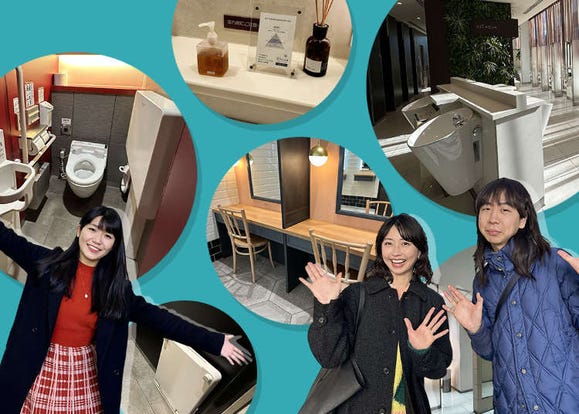
Comfy Toilet Map for Osaka Station: Can You Get Around with a Stroller? Are There Clean Powder Rooms?
-

What Items Does a Japanese Stationery Lover Want Most? We Find Out with Taku Kidate!
-
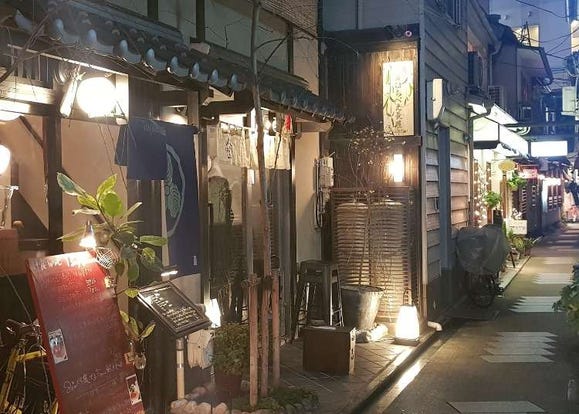
13 Unique & Fun Kyoto Food Tours to Enjoy in 2024
-
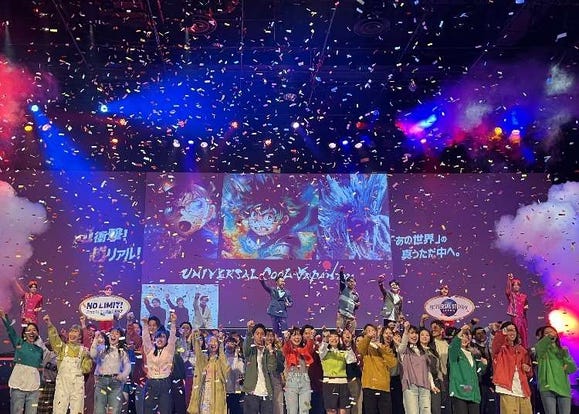
Make the Most of 'Universal Cool Japan' (2024 Guide) - Detective Conan, Monster Hunter & More
-
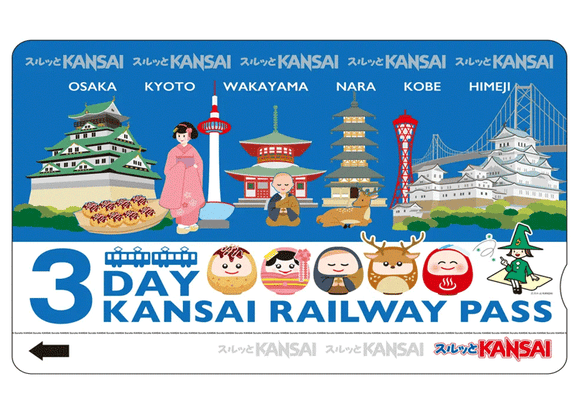
Everything You Need to Know About the Kansai Railway Pass
-
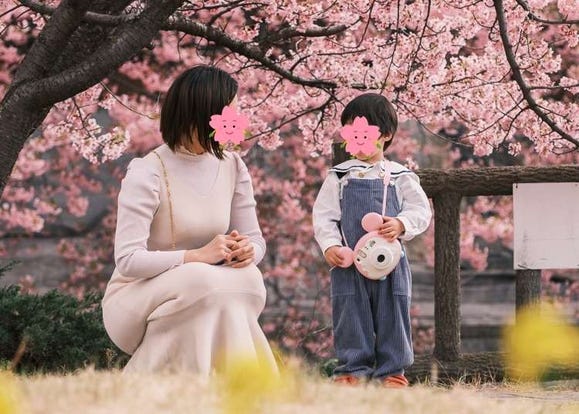
Taking Mom and Dad on a Trip to Osaka: How to Have Fun, Tips, Must-See Spots, and a 5-Day Itinerary
-

5 Best Hotels Near Universal Studios Japan: Top-Rated Places to Stay
-
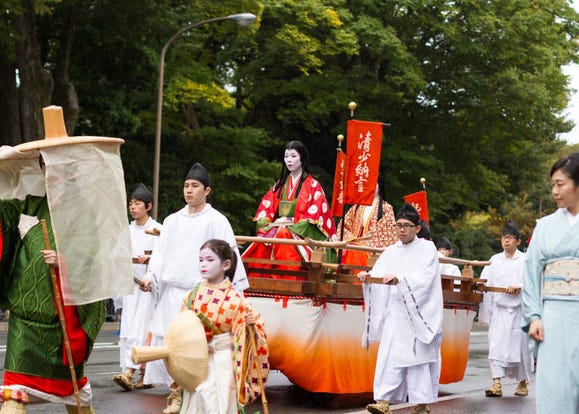
5 Amazing Kyoto Festivals You’ll Want to Experience During Your Next Trip
-
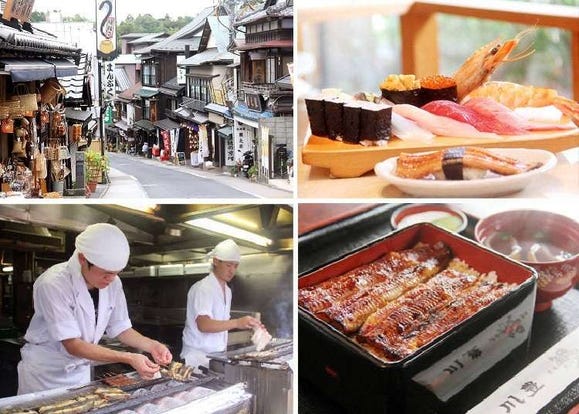
(Video) Walking Tour along Narita Omotesando - Quaint Historical Village near Narita Airport!
-
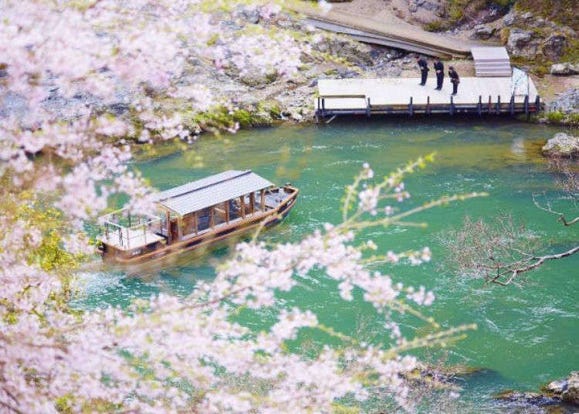
Hoshinoya Kyoto: This Incredible Japanese Hotel Welcomes You By Boat on a Sakura-Filled River
-
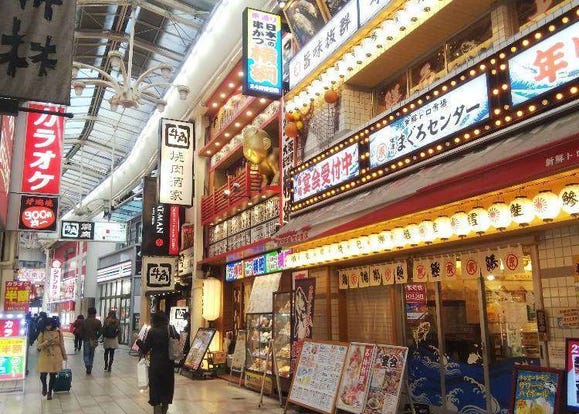
5 Popular Things to do in Umeda - Osaka's Central Area!
-

Why Osaka Tennoji Zoo is So Popular with Foreign Tourists (Guide & Highlights)
- #best gourmet Osaka
- #things to do Osaka
- #what to do in kyoto
- #what to bring to japan
- #best gourmet Kyoto
- #new years in Osaka
- #what to buy in nanba
- #Visiting Osaka
- #onsen tattoo friendly arima
- #daiso
- #Visiting Kyoto
- #best japanese soft drinks
- #japanese fashion culture
- #japanese convenience store snacks
- #japanese nail trends













